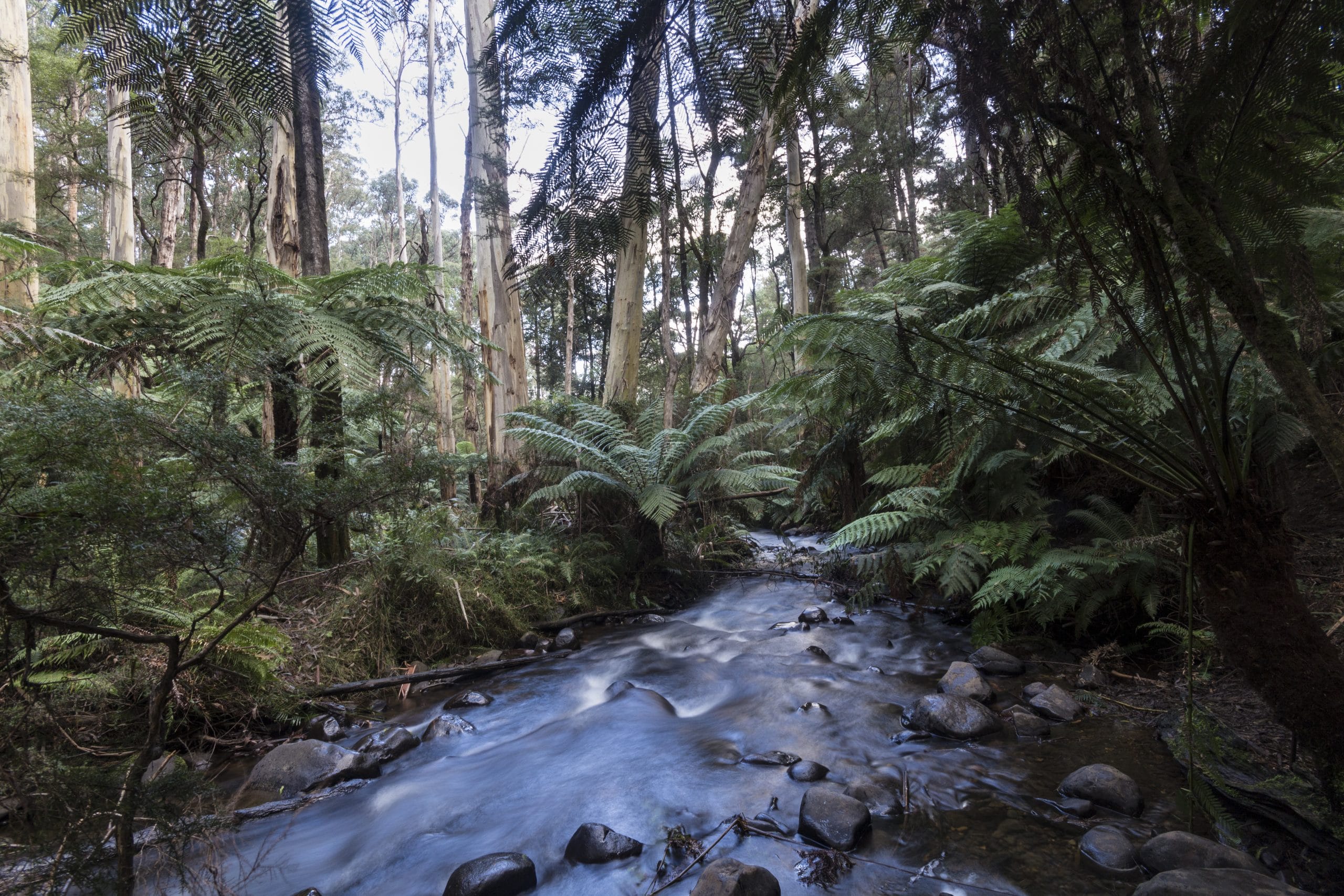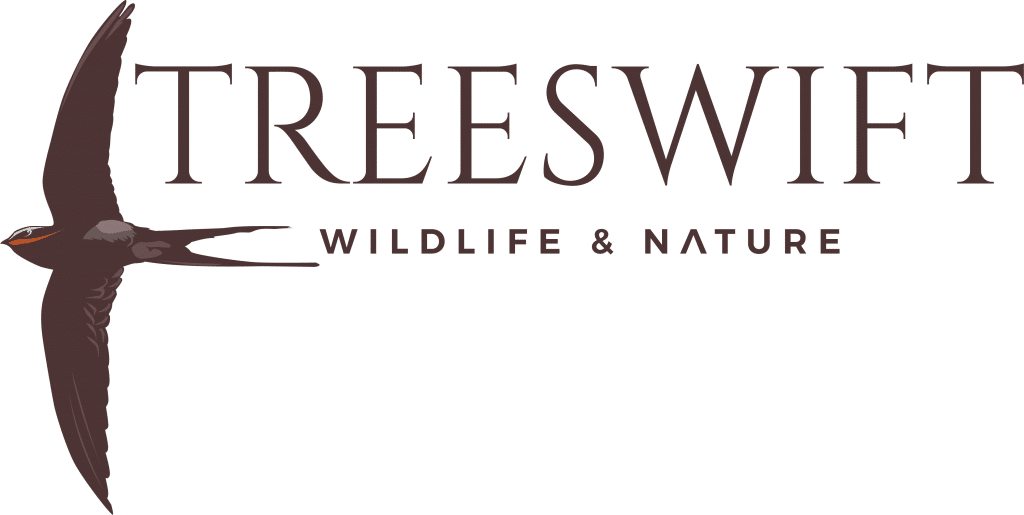Tonight we were joined by local couple Alison and Liam for one of our ‘Yarra Ranges: Nocturnal Adventure‘ tours. After a rocky start crossing through the Friday night traffic, we made it into the foothills of this spectacular mountain forest area. Even at night, this is one of Victoria’s most spectacular wild places, particularly within the Greater Melbourne area (about 1hr 15 min drive from Melbourne CBD). This 76,000-hectare park is a haven of significant Mountain Ash (Eucalyptus regnans) forest — recently awarded as Australia’s Eucalypt of the Year — and quiet gullies of Tree Fern, Fungi, and cool temperate rainforest. During the day, it is home to Superb Lyrebird, Gang-gang Cockatoo, Yellow-tailed Black Cockatoo, and Eastern Yellow Robin — but at night, that’s when a whole new cast of characters come out!
On the way into the rainforest, we took our time cruising along a number of backroads looking for wildlife and were rewarded with several Eastern Grey Kangaroo, a Tawny Frogmouth, a Common Ringtail Possum, several European Rabbit, and a chorus of Striped Marsh Frog calling from a grassy drain along the side of the road. Unfortunately, we missed Common Wombat, a species we can normally pin down wandering quietly along these roads around dusk, but promised to put in some time for this squat burrower at the end of the evening.

It was now time to leave the car, grab our spotlights, and head into the forest. It was a quiet and relatively clear evening with almost no wind and clear inky skies speckled with a million stars – quite the view when you turn off the torches and just stare up through the canopy of Mountain Ash. The conditions favoured success, and mere minutes after descending into the forest we connected with another Common Ringtail Possum, and then our very first Southern Greater Glider — one of the main target species for the evening! These are a spectacular animal and usually the most sought after on our Yarra Ranges Nocturnal tours — due of course to their huge fluffy appearance, long feathery-fluff tail, wide dark eyes, and thick, furry ears. They are endangered, threatened by the usual man-made threats of land clearing for development, logging of their specialist habitat, climate change raising nighttime temperatures, and bush fires — the horrific Black Summer bushfires of 2019-2020 alone, destroying over 96,000 acres of forest set aside for their protection.
Tonight, we were extremely fortunate with this species, eventually observing over 10+ individuals including 2x of the luxurious white morph animals (they come in both black and white forms). They are the largest gliding marsupial in the world (roughly the size of a fat tabby cat), and can soar over 100 metres through the forest. They are also very approachable, often remaining still, curiously watching you as you watch them. They breed from March-June in favourable conditions, nesting in large tree hollows, and then carrying the single young in a pouch for approximately 4 months.
We continued on through the forest stopping to listen to Ewing’s Tree Frog (Litoria ewingii) which called intermittently throughout our visit, as well as try out the Echo Meter Bat Detector. Given it was a particularly warm night there were plenty of moths and insects, which meant we had lots of microbat flying around the trees. Over the course of our visit, the Echo Meter picked up Large Forest Bat, Little Forest Bat, Eastern False Pipistrelle, and Gould’s Wattle Bat. We had a number of close encounters with the Eastern False Pipistrelle in particular (at least according to the readings on the Echo Meter), when they flew particularly close, even circling around our camera lens as we photographed Southern Greater Glider — a very cool experience!
Despite our earlier road-side Tawny Frogmouth, the forest remained quiet for avian life. We picked up a few roosting Sulphur-crested Cockatoo and startled what was most likely a Grey Fantail, but the forest owls were choosing to remain quiet. Instead, our next highlight was a small group of Yellow-bellied Glider. Unlike the Southern Greater Glider, these marsupial’s are very active and noisy, often making all sorts of unusual yips, shrieks, and gurgling grunt-like calls (particular if there are Powerful Owl or Greater Sooty Owl around!). Like the Southern Greater Glider, they have long fluffy tails and overall, can look similar to the dark-morph. However, they have pink furless ears, a yellow belly, and give off a duller reddish/brown eyeshine.
A little further on, we had our first encounter with the stunning white morph of the Southern Greater Glider — and as expected, this beautiful animal quickly became the highlight of the evening. Look at that stunning tail!
Overall, we spent around 2 hours exploring the beauty of mountain rainforest. On the way out, we added another Common Ringtail Possum, finally caught up with 3-4 Australian Boobook, saw several more Yellow-bellied Glider, Southern Greater Glider, heard a grunting Koala, heard a Sambar Deer barking, and continued recording the same flitting microbat species.
On the way back to Melbourne, we took several forest drive detours and connected with Eastern Grey Kangaroo, a mystery animal on a powerlines which turned out to be a pair of shoes,and a dozen or so European Rabbit — but the Common Wombat continued to evade us. Something for the next trip! Thanks to Alison and Liam for joining us! We hope you had a wonderful time exploring the wonders of the Yarra Ranges at night!
If you would like to come along on one of our nocturnal tours, you can book online by visiting “Yarra Ranges: Nocturnal Adventure” and following the prompts, or you can call us on (03) 7018 2302, or email us at info@treeswiftwildlife.com
Animal List:
Mammals:
– Common Ringtail Possum (3x total – 1x at same time)
– Yellow-bellied Glider (4x total – 3x at same time)
– Southern Greater Glider (12x total – 3x at same time)
– Koala (1x heard only)
– Large Forest Bat (+ Echo Meter Bat Detector)
– Little Forest Bat (+ Echo Meter Bat Detector)
– Eastern False Pipistrelle (+ Echo Meter Bat Detector)
– Gould’s Wattled Bat (+ Echo Meter Bat Detector)
– Sambar Deer (1x heard only)
– Eastern Grey Kangaroo (6x total – 3x at same time)
– Swamp Wallaby (1x total)
– European Rabbit (12~)
Birds:
– Sulphur-crested Cockatoo (4x)
– Australian Boobook (3x – 1x seen, 2x heard)
– Grey Fantail (1x)
Amphibians:
– Striped Marsh Frog (2-3x heard from farm side roads)
– Ewing’s Tree Frog (5+ heard within forest)



2 thoughts on “Yarra Ranges Spotlighting Trip Report – April 2022”
Thanks for a great night out!
Wonderful photos of many animals I’ve barely heard of. Cheering me up during this lockdown!